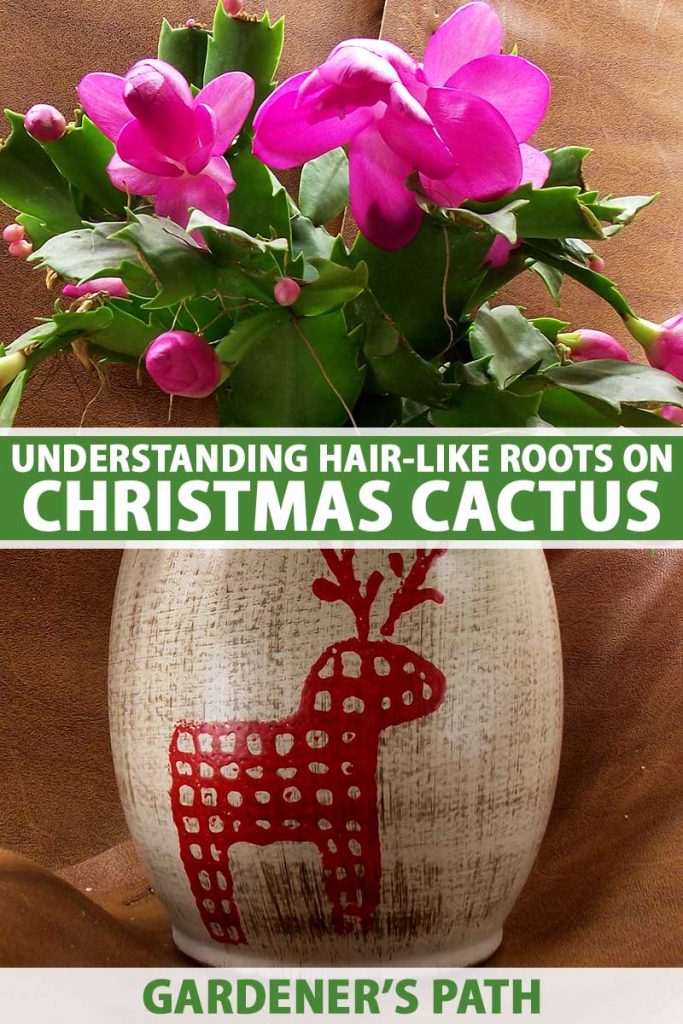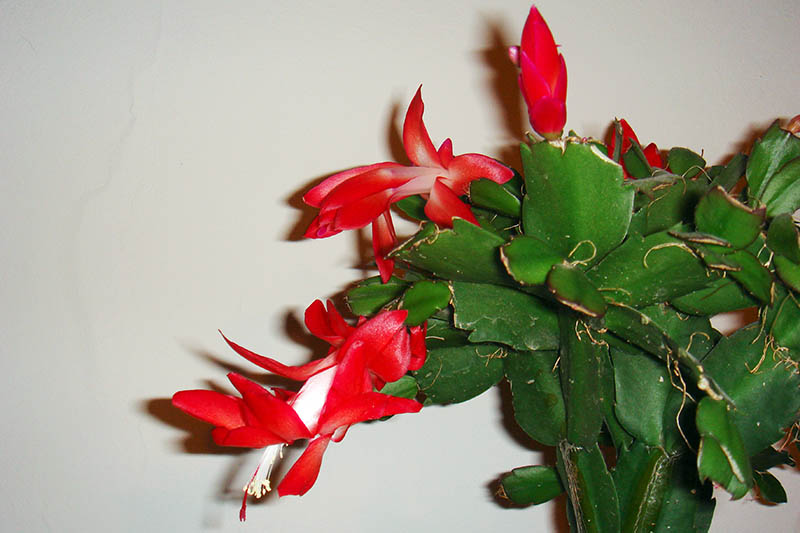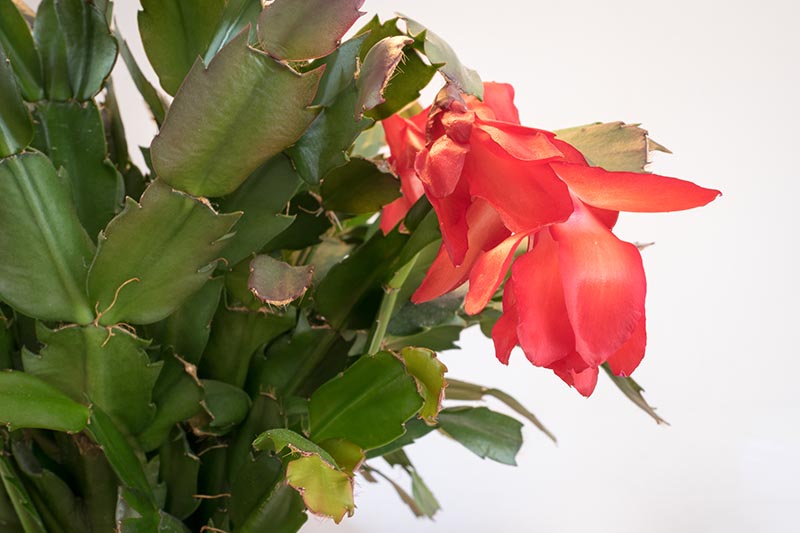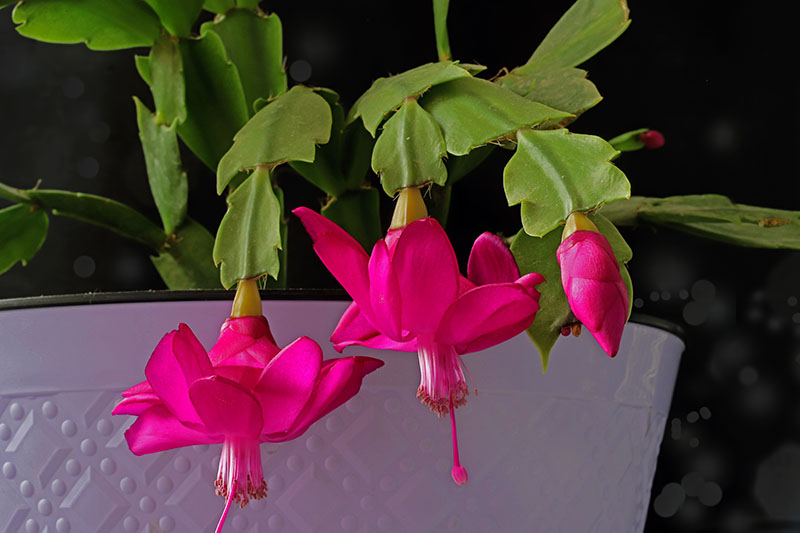It is a popular indoor houseplant because of the profusion of blooms that appear between Thanksgiving and Christmas, depending upon the variety. Sometimes plants develop hair-like growths between their stem segments, or cladodes. These are called aerial roots. We link to vendors to help you find relevant products. If you buy from one of our links, we may earn a commission. In this article, we talk about aerial roots on Christmas cacti, and what they may mean to the home gardener. Here’s the lineup: A plant’s behavior can teach us a lot about its needs, so let’s dig in and get to the bottom of this!
Understanding Aerial Roots
Aerial roots grow above ground from stem or leaf tissue. Their development may be a typical characteristic of a species that is always present, or an adventitious, random occurrence that coincides with a plant’s need to adapt to some change in its environment.
Four primary functions of aerial roots are: support, moisture absorption, nutrient uptake, and oxygen intake. In the case of tropical Schlumbergera that in their natural habitat cling to trees and rocks in the sun-dappled shade of a rainforest canopy, these hair-like, brownish growths appear when fundamental needs are unmet. Let’s find out what they are.
Adapting to Survive
A Christmas cactus is wired to grow in a tropical climate where it can partake of the available air, light, nutrients, and water. When it doesn’t receive enough of these essentials, the plant reacts and responds. One way it tries to fulfill its needs is by generating aerial roots from its foliar tissue. In nature, a lack of sunlight may cause bending or stretching in an attempt to locate more and remedy the deficiency. To keep a secure footing, it may grow adventitiously for added support while doing so. In addition, if the sub-surface roots that absorb moisture, nutrients, and oxygen become oversaturated, they are unable to function. Generating a backup system becomes necessary, to absorb what it can from the air for sustenance. The same needs apply to those grown as houseplants. A little detective work will usually reveal the reasons why these fragile growths have made an appearance.
Evaluating Causative Factors
While it’s not uncommon for a Christmas cactus to grow aerial roots, this is not just another natural trait, but rather, a response to some kind of environmental stress.
Six common stressors that may induce adventitious growth are: unsuitable light, inappropriate temperature, oversaturation, lack of water, lack of nutrients, and traumatic events. Let’s explore each of these potential stressors:
1. Unsuitable Light
Schlumbergera species are phototropic, meaning they are highly responsive to light changes. To get a Christmas cactus to bloom, it is necessary to induce dormancy by manipulating the light and temperature to mimic winter conditions. During the growing season, consistent indirect sunlight is needed. Too little may result in improper chlorophyll-to-energy conversion, and too much may scorch buds, leaves, and blossoms. A consistent supply of appropriate light is crucial to prevent undue stress to the plant, which may result in the formation of aerial roots as they attempt to reach for brighter conditions.
2. Inappropriate Temperature
The ideal temperature for indoor cultivation is between 70 and 80°F. Temperatures that are too cold or too hot, or those that fluctuate widely, may have an adverse effect. Simulated indoor dormancy for the purpose of bud formation requires temperatures in the 50 to 55°F range. Consistency of temperature during both the growing season and the period of dormancy helps to minimize stress, whereas fluctuating temps may result in hairlike growths.
3. Too Much or Too Little Water
In addition to causing the potting medium to be soggy or oversaturated, an overabundance of moisture may cause yellowing leaves, rotting plant tissue, and an inability to take up nutrients and water via roots below ground. To avoid potentially lethal complications of wet feet, as well as the production of the hairlike structures in question in response to stress and an inability to acquire adequate nutrients via the soil, be sure the pot your Christmas cactus is growing in has an adequately sized hole in the bottom, to allow excess water to flow through. Also make sure the potting mix is loose and well-draining. Don’t water until the top one to two inches of potting medium feels dry. And water only at the soil level, not on the leaves. You may be able to help a plant recover by unearthing it, rinsing the sub-surface roots clean, trimming off any rotten plant material, and repotting it in new, lightly moist potting medium. This will cause additional stress to your plant in the short run, but repotting may ultimately save it. You can read more about selecting the best potting mix for Christmas cacti here. Alternatively, you can take cuttings to propagate for a completely fresh start. Underwatering can be equally detrimental. Leaves that lose their plumpness and begin to curl are signs of too little moisture. And growths may appear, in an effort to glean moisture from the air. If they haven’t completely dried up, they may be able to bounce back with a thorough soaking and draining, followed by a vigilant regimen of watering when the top one to two inches of potting medium are dry. Keep in mind that though they are succulents, they still require irrigation from time to time, typically more when they are blooming and less when they are dormant.
4. Lack of Nutrients
Nutrient deficiency can cause adventitious growth for the purpose of seeking out new sources of food, when sub-surface roots fail to take up the required nourishment. If your cactus is large and old, your potting medium may be depleted of nutrients. Repot in a fresh medium that offers good drainage, and fertilize with a cactus and succulent product. Both old and young plants benefit from the addition of fertilizer during the growing season. Follow package instructions for best results.
5. Traumatic Events
Finally, flora can suffer a degree of shock when it experiences traumas such as having cuttings taken for propagation, or suffering accidental damage. Aerial roots may appear in response to the upset. Returning your plant to reliably constant conditions can help it to readjust to its surroundings. With a few adjustments, adventitious roots will wither and drop off, and you are likely to see few to none thereafter. This is encouraging evidence of optimal functioning.
Some folks find the hair-like growths unsightly and snip them off, but I prefer to keep them as reminders of rainforest days and wild Schlumbergera that fend for themselves. Have you seen these on your own plants? What did you do to adjust your cacti’s care regimen? Please send us a message in the comments below! If you’re a fan of the Christmas cactus and found this article informative, you’ll enjoy reading these guides next:
How to Identify and Control 7 Common Christmas Cactus Pests Is Christmas Cactus Toxic to Cats? Why Is My Christmas Cactus Turning Purple?
© Ask the Experts, LLC. ALL RIGHTS RESERVED. See our TOS for more details. Uncredited photos: Shutterstock.




